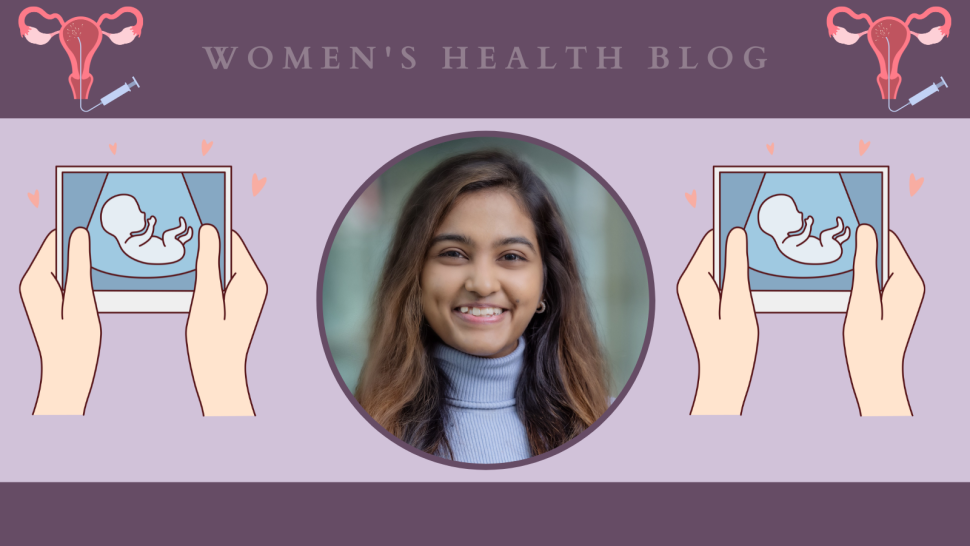Interviewee: Deea K Dev, Medical Student, University of British Columbia, Faculty of Medicine, Authors/Editors: Romina Garcia de leon, Shayda Swann (Blog Co-coordinators).
Published: September 1, 2023
Can you tell us about your research?
I work in the Memory and Imagination Lab under Dr. Daniela Palombo. We wanted to explore the memory characteristics of an unsuccessful fertility treatment experience. We wanted to look into the lived experiences of people who had gone through unsuccessful in vitro fertilization (IVF) treatment and see to what extent it became an intrusive and self-defining experience. IVF is a form of assisted reproductive technology that is quite common, but unfortunately often does not result in pregnancy and the experience itself is accompanied by a lot of adverse outcomes. It's really expensive and getting through an unsuccessful IVF treatment has larger implications for mental health or self-esteem, and even quality of relationships with a partner. We partnered with a fertility clinic and the staff there were really supportive of the research proposal and its potential implications. We administered questions about the patient's experiences with their medical care team. The study has really important implications for instating procedures and protocols surrounding this particular patient population so that we can work toward more patient-centred care. It seems like the doctors at that fertility clinic really valued this aspect of our research as well.
Why did you want to get involved in women's health research?
Topics like these don't really get much attention and there is under-representation of women across research and health care. It's more common to know that there are intrinsic biological factors like hormones and sex-specific physiology that manifest differently for women, but I think something that's not really talked about a lot is the fact that extrinsic factors are really important to take note of when conducting women's health research. Socio-cultural issues and the environment itself shape the way that women interact with the healthcare system. I felt that it was really important to identify and evaluate patient perspectives on their own experiences with healthcare, then that way we can work towards patient-centred care and move away from harmful practices. I remember when I was volunteering with this organization called Wish which supports women who are involved in Vancouver's street-based sex trade, I heard a lot about very harmful practices like medical paternalism. Hearing these patient perspectives was really a motivator for me.
You mentioned that you're doing a lot of other advocacy work right now. Could you share more about that?
In my first year of medical school, I joined the Canadian Federation of Medical Students as the Local Officer of Sexual and Reproductive Health, representing UBC. Our first event was this overview of LGBTQ+ care and gender-affirming practices by this really amazing speaker and we had medical students across Canada attend that event. Another one that's really popular was an IUD insertion workshop to help medical students understand the experiences that women face when going through IUD placement, and also the different types of contraception available. Another position I did was with the Women's Health Initiative committee to organize educational events for medical students about specialized healthcare needs. We did an event on reproductive justice and health equity for free prescription contraception, which, as you may know, was something that was legislated this year in British Columbia. So that was really interesting. I also volunteered at Wish and that was really an amazing experience. Wish offers amazing services like an emergency shelter and a nightly drop-in centre. They want to make sure that women have a safe place to rest and access harm-reduction supplies. I've learned a lot from that experience as well.
What impact do you hope to see with the work that you're doing?
I hope there is emphasis placed on the importance of highlighting the specific needs of women in healthcare in our medical training. I think there's not much coverage of very important topics that underscore reproductive and sexual health topics, but also recognize the intersectionality of patients coming from different backgrounds. I think it's really important to educate medical students so that we can become equipped as physicians who are eventually the ones in positions of power to start filling up the unmet gaps in our healthcare system. To help medical students get those qualities like listening to patient perspectives, and moving away from harmful practices like paternalism. I hope these are some of the things that medical students graduate with so that we can change the healthcare system and the way that women interact with it.
Where can people find out more about the work you do?
You can find me on LinkedIn.
